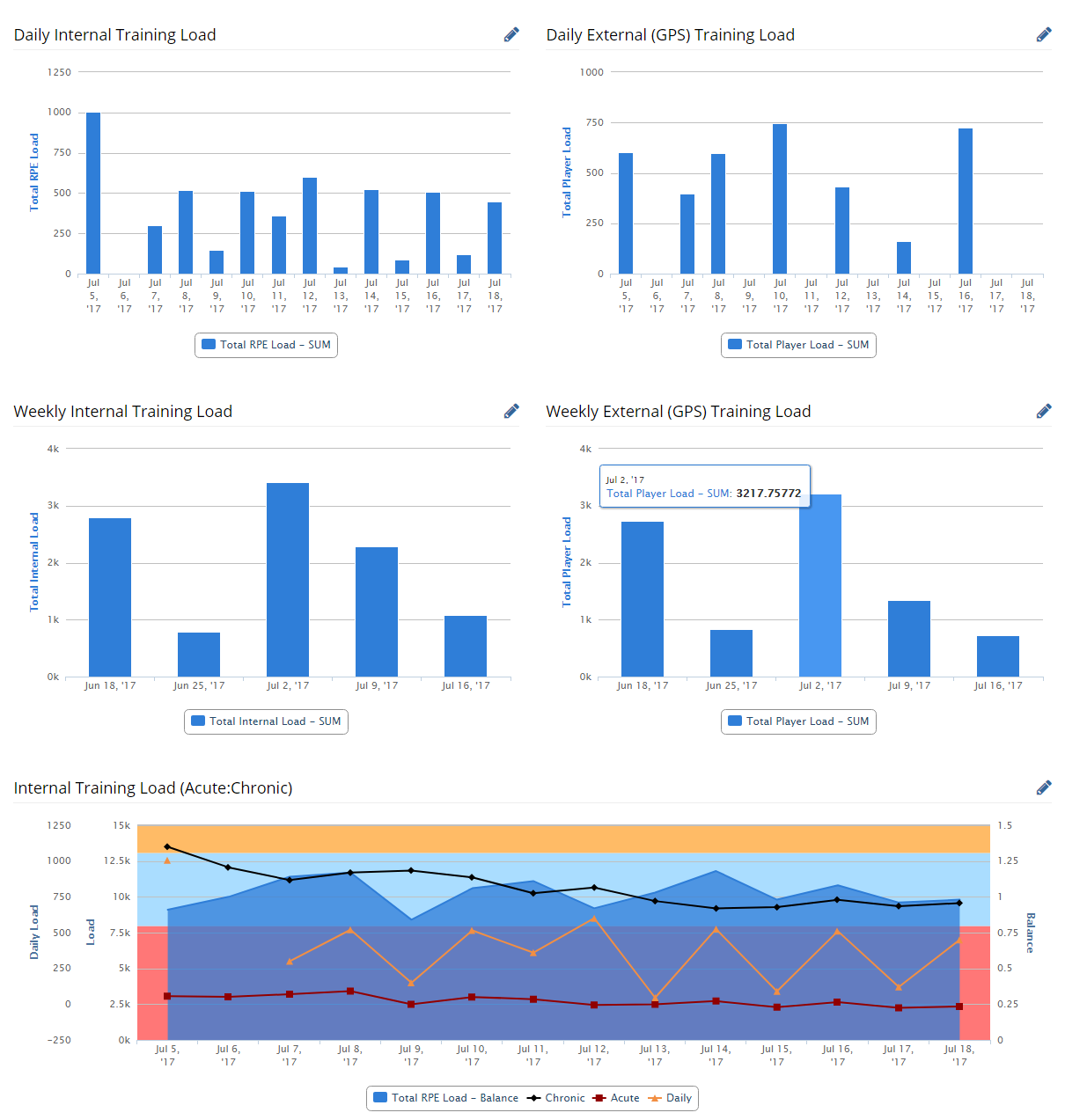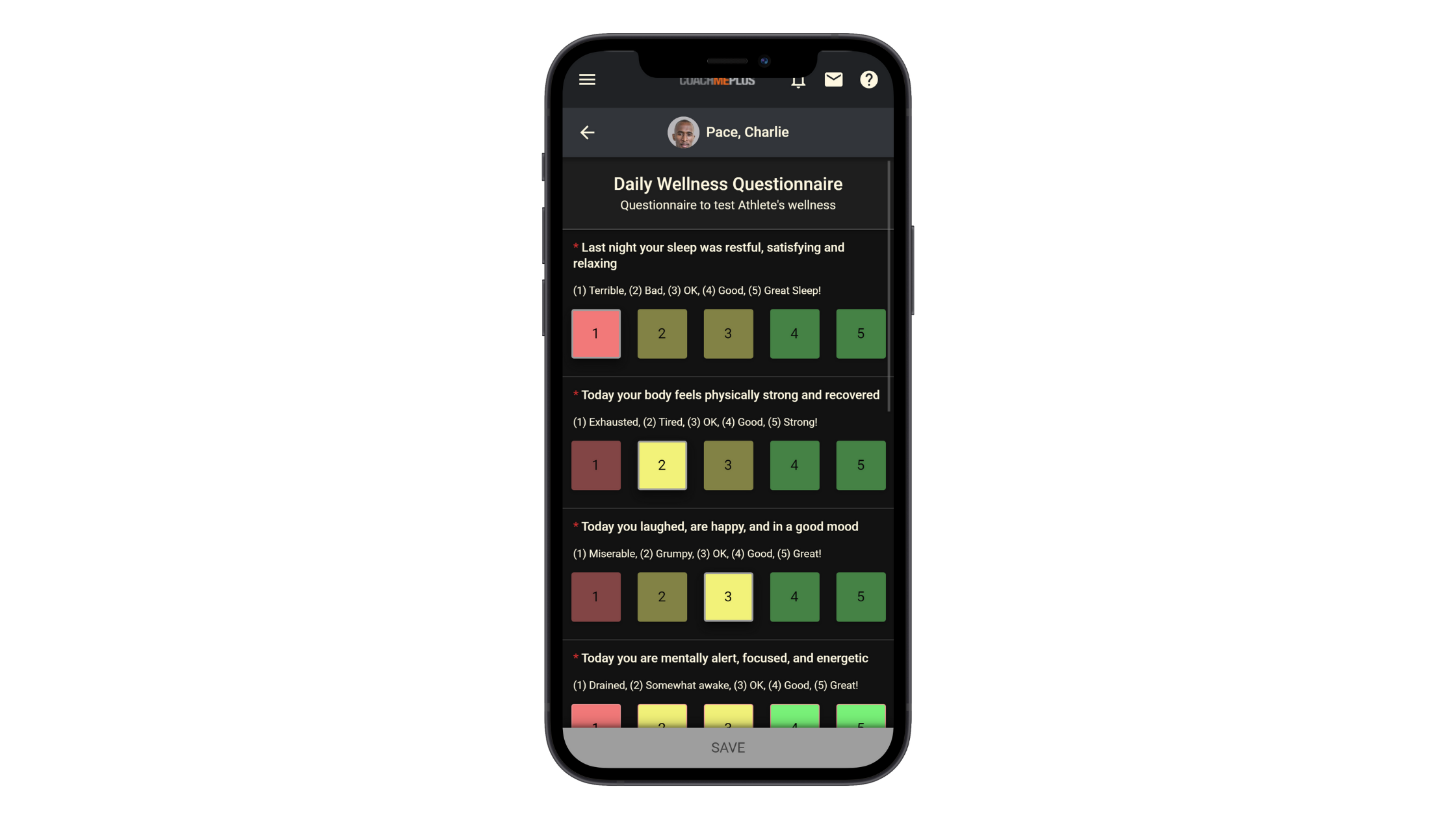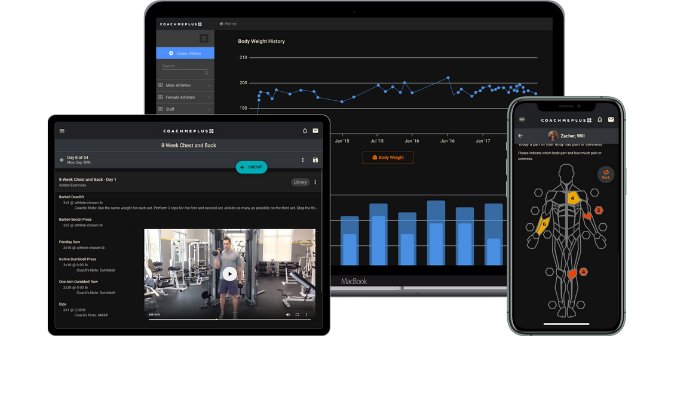
Monitoring fatigue, effort, and musculoskeletal strain is essential to modern sport. Subjective indicators—those that rely on athlete feedback—are inexpensive and practical options for professionals that require information on how the athlete is handling the training and rehabilitation program they are involved with. Coaches, sport scientists, and sports medicine practitioners have successfully used subjective feedback with and without objective measures of internal and external loading. This Academy guide reviews reported fatigue, session ratings of perceived exertion, and body maps and charts. In addition to presenting the options available for monitoring athlete training and recovery responses, we also discuss the limitations of subjective reporting.
Wellness Questionnaires, Ratings of Perceived Exertion, and Body Charts
Athlete feedback has two primary options: subjective and objective measures. Objective feedback is mainly the quantified work being performed or the physiological response to the work achieved. The quantification of work and the responses to the training or competition require technology and sometimes invasive measures that are not accessible or practical for support staff. The subjective reporting of training, for both the session and the responses later from the loading period, is a quick and scientifically valid way to monitor athletes.
Measures of athletic well-being are commonly used to reduce both the physical and mental risks of heavy training. Most survey-style options with athletes are done periodically or daily, depending on the types of questions and information needed.
Ratings of perceived exertion (RPE) are qualitative expressions of effort utilizing an agreed-upon scale, usually 1-10 or 1-5. Borg’s Scale is less popular today in applied settings, but is a valid option to use in training. RPE is useful for several reasons; the most practical reason is that it requires very little education and can be used universally.
Body charts are now adopted as direct ways for athletes to communicate typical and expected soreness or share medical needs through anatomical charts of the body. The strength of body charts is that they are easy and quick to use with mobile devices.
Subjective reporting methods all have strengths and weaknesses, as well as unique benefits that are part of a portfolio of options for coaches. To summarize a wide set of subjective measurement techniques and systems, we will cover ratings of perceived exertion, athlete wellness questionnaires, and the use of body maps for pain and soreness tracking.

Ratings of Perceived Exertion
The rating of perceived exertion is one of the most widely used subjective options in sport, and is still an effective way to help monitor the training load. While it does have several limitations, its potential in helping foster communication between athlete and support staff is valuable. Ratings of perceived exertion require the athlete be honest with their reflection of the training or performance, and select the right qualitative summary of the session or competitive event. Depending on the implementation, athletes can reflect on previous sessions to help compare their recent experience in training or competition.
The most common approach to rating manual exertion is an overall summary of the session after the session is over. Training that is more explosive and anaerobic in nature does allow a period of time after the workout, as fatigue may manifest differently after strength training than conditioning. Immediate feedback and delayed reporting are both valuable in monitoring athletes if used properly.
The sensitivity of RPE with high-velocity sprinting makes the use of subjective reporting questionable in practice, and it is typically used to quantify the overall demand of a session rather than the highest explosive output. Session RPE is typical with practices, but not with strength training sessions where force and barbell output technologies are prevalent. Effort-based subjective feedback during strength training is promising, but due to the low precision and cost of velocity-based training devices, it’s unlikely this method will grow in popularity.
Periods of time where RPE is not used in practice are expected, as the monotonous experience or daily reflection may not encourage accurate depictions of training. Due to the availability of session RPE with youth sports training, it may be difficult to sustain use and compliance over the course of a career; thus, the popularity of internal and external objective tracking, especially with wearables. CoachMePlus has built-in RPE Questionnaires that streamlines workflow.
Session RPE is a perfect longitudinal solution for teams that demand a quick and simple monitoring approach that is universal and easy to apply in team settings. Most of the benefit of RPE is volume of workload, as it’s unable to distinguish between types of training modes, such as hard circuit or longer practice. You can use session RPE with nearly any sport, and combine it with other forms of subjective reporting such as wellness questionnaires and body maps.

Guidelines on Wellness Questionnaires
Strategically, wellness questionnaires are used to safeguard the overall health of the athlete by tracking the changes in their physical and emotional states. Due to the subjective matter collected, they depend on honest athlete feedback and careful interpretation by the staff. Statistical evaluation methods that detect meaningful changes and trends are commonly used. Wellness questionnaires vary in application, ranging from short summaries of a few notable components of health and well-being to extensive reviews of mood states. The rhythm of use should be based on the resources and the ability to make interventions or changes to training and practice load. In addition to reporting changes to wellness, subjective survey-style tools can also reveal issues in lifestyle choices and behaviors that need to be modified.
Common subjective reporting options are the Recovery Stress Questionnaire for athletes (RESTQ-S), Profile of Mood States (POMS), and Daily Analysis of Life Demands of Athletes (DALDA). Less common reports are the Competitive State Anxiety Inventory (CSAI-2) and the State-Trait Anxiety Inventory. Finally, the Multi-Component Training Distress Scale (MTDS) and the State-Trait Personality Inventory have been researched in the field. Support staffs must choose the frequency and depth of questions that need to be asked, and it’s common to utilize shorter and near-daily tracking rather than extensive surveys done over longer time periods.
Custom questionnaires are very common, but because they’re not interchangeable, it’s hard to monitor and compare athletes who work with multiple coaches or change teams. Making short, additional comments or logging open communication is recommended as well. Often, the athlete feels the need to express what they are experiencing in the way that is unrestricted. Solutions, whether analog or digital, should have a section that allows for an open channel from the athlete to the staff. CoachMePlus allows coaches the ability to leave notes on their athletes’ questionnaires. This gives coaches the customization they need to fully understand their athletes’ needs.
Best Practices with Body Charts
The effective use of body charts requires compliance and the right actionable interventions planned ahead of the monitoring. The vast majority of athletes who report soreness or possible injury (from pain symptoms) are usually treated or supported with direct therapeutic modalities or clinical evaluation. Thus, the incorporation of body charts is a straightforward way to either support symptoms of training or trigger sports medicine intervention. The use of anatomically specific maps of the body is also convenient for athletes who may not be knowledgeable about the areas that are bothering them. Digital body charts are important to monitoring, as the selected regions can be analyzed and compared to training programs to reveal a possible cause and effect with workouts and practices.
Smart devices such as personal smartphones or team kiosk-style options are easy to implement, and due to the way they alert of injury symptoms or complaints of overload, are efficient for athlete tracking. CoachMePlus’ Team Access Point feature lets an entire team of athletes efficiently report body soreness from a team tablet placed within the workflow of a team’s facility. Body charts are excellent tools for the return-to-play process, enabling practitioners to see how the athlete involved can tolerate the program and whether other unexpected patterns of strain are responding.
The scientific support for body charts is currently unknown. At this point, no specific claims have been made as to their effectiveness for performance and injury prevention, but they are primarily leveraged to communicate efficiently with athletes. Due to their high granularity compared to a summary of soreness on a wellness questionnaire, body charts are extremely practical for advancing the collection of simple metrics such as the acute and chronic workload ratio. Load metrics of choice can be integrated with regional areas of the body for specific risk management of muscle groups, but no scientific investigation outside overall load and injury is available at this time.
Science And Practical Limitations Of Subjective Data
Subjective reporting techniques are not perfect and do have limitations as they are representations of what the athlete is perceiving and experiencing. Pain, whether acute or chronic, may not accurately depict a medical need, due to either prescribed drugs or an athlete’s perception of pain. Athletes must be compliant and honest; otherwise their own motives to either play or rest may bias the data reported. Finally, the subjective reporting doesn’t actually diagnose what could be problematic, as symptoms are part of a clinical process.
Teams and organizations should combine both subjective and objective data to educate their decision-making. Objective data usually requires additional interpretation, as the information is indicative of a small fraction of an athlete’s physiology. Reported measures are important gateways to open communication and foster truth with athletes.

CoachMePlus is a comprehensive solution for any training environment, ranging from scholastic level to pros, and including both military and private facilities.

Recent Comments